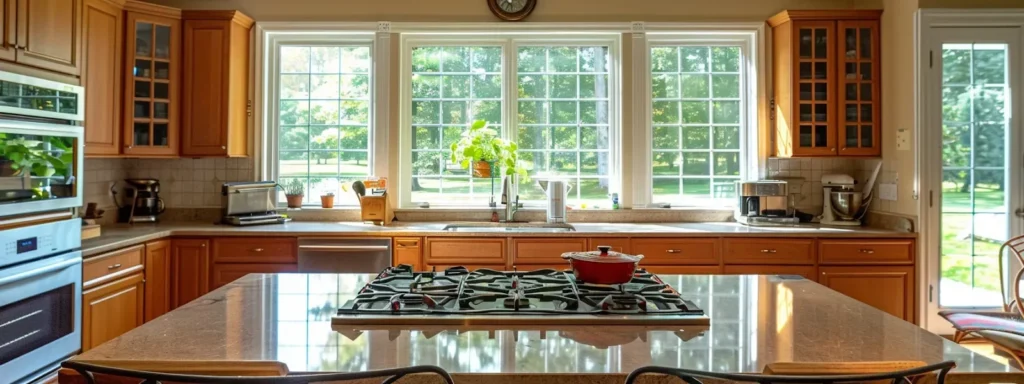Disclaimer: This article is for informational purposes only and does not substitute for professional advice on health and safety compliance.
Equipping a kitchen involves a thoughtful plan to meet the demands, cost, and regulations of food safety. The process goes beyond choosing top-notch equipment; it means building an atmosphere conducive for your kitchen staff to work quickly and safely. Selecting the right equipment is critical to a foodservice operation’s success. In this post, we give you all the information you need to consider when it comes to furnishing your kitchen, and how, with Amarula Solutions and an Amarula BlueStacks subscription, you can accomplish all this and more.
Essential Considerations When Furnishing Your Restaurant Kitchen
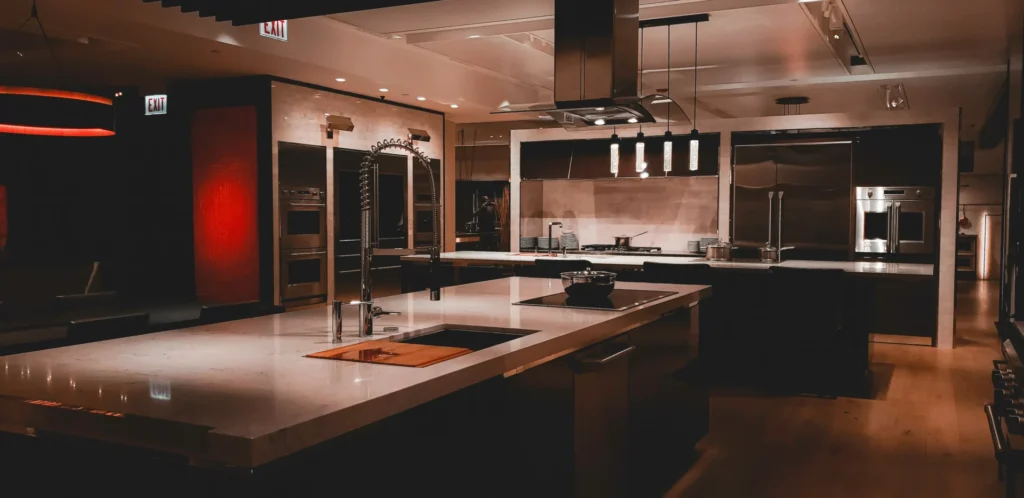
Before diving into the specifics of kitchen equipment, it’s crucial to understand the foundational needs of your restaurant. Consider the menu you plan to offer and the volume of food that will be prepared daily. This will determine the size and type of equipment you need, from ovens and stoves to refrigerators and freezers. Consider the kitchen flow, ensuring that the layout supports an efficient movement from food prep to plating. Then, you can check out a restaurant equipment store to find the best prices for refrigerators, commercial cooking equipment, pots, pans, prep tables, and even smallwares.
Furnishing a commercial kitchen and meeting health and safety standards is key. Stock your kitchen with products that can be easily cleaned and are unsuitable for bacterial growth. Stainless steel surfaces, such as those in restaurants, are ubiquitous in commercial kitchens because of their ruggedness and sanitation potential. Focus on ventilation systems, which keep a comfortable work area and are a significant health code requirement.
Energy efficiency is another significant factor to consider. Although energy-efficient appliances may have a higher upfront cost, they can yield long-term savings on utility bills. Moreover, sustainability is increasingly important to consumers, and showcasing your commitment to environmentally friendly practices can benefit your restaurant’s image.
Selecting the Right Commercial Equipment for Efficiency
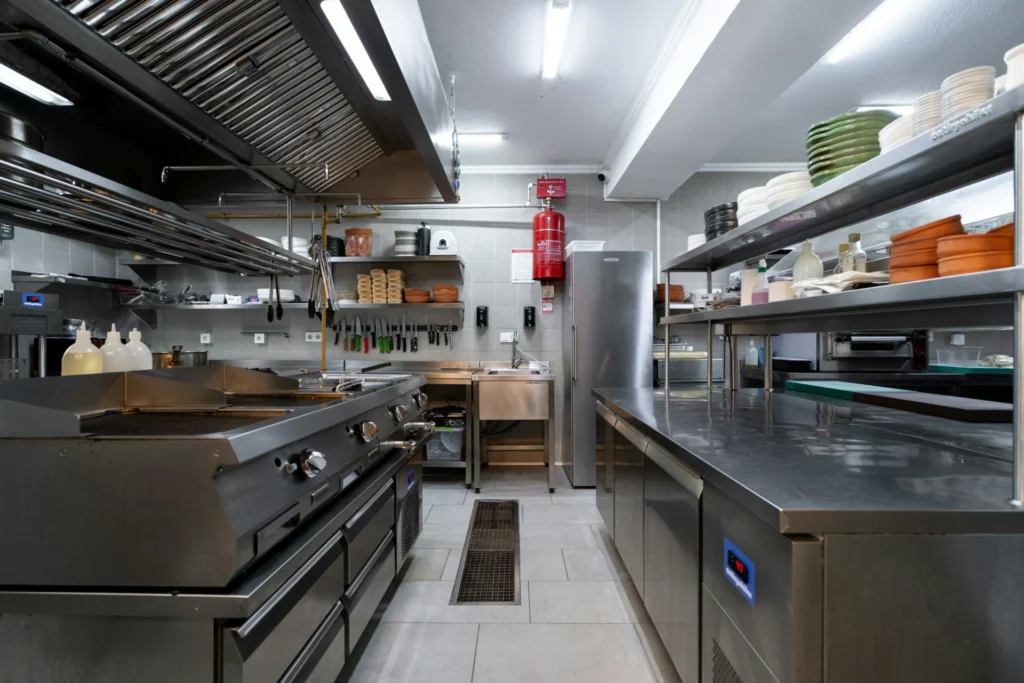
The proper tools and equipment are essential for any commercial kitchen to prosper. A “restaurant” opens. For many restaurants, high-performance ranges, ovens, and grills are the name of the game, and you need to consider aspects such as power source, capacity, and functionality. Also, the size of the refrigeration units is another factor to consider. The ability to sustain the same temperature is essential for safe food storage and high-quality produce.
Your menu should demand prep equipment (blenders, slicers, mixers). A heavy-duty stand mixer is Ideal for production-oriented kitchens or ones that enjoy baking with a whole family. On the other hand, good knives for slicing and dicing in restaurants that focus heavily on fresh produce can actually speed up that prep time quite a bit.
Ergonomic Design for a Productive Kitchen Layout
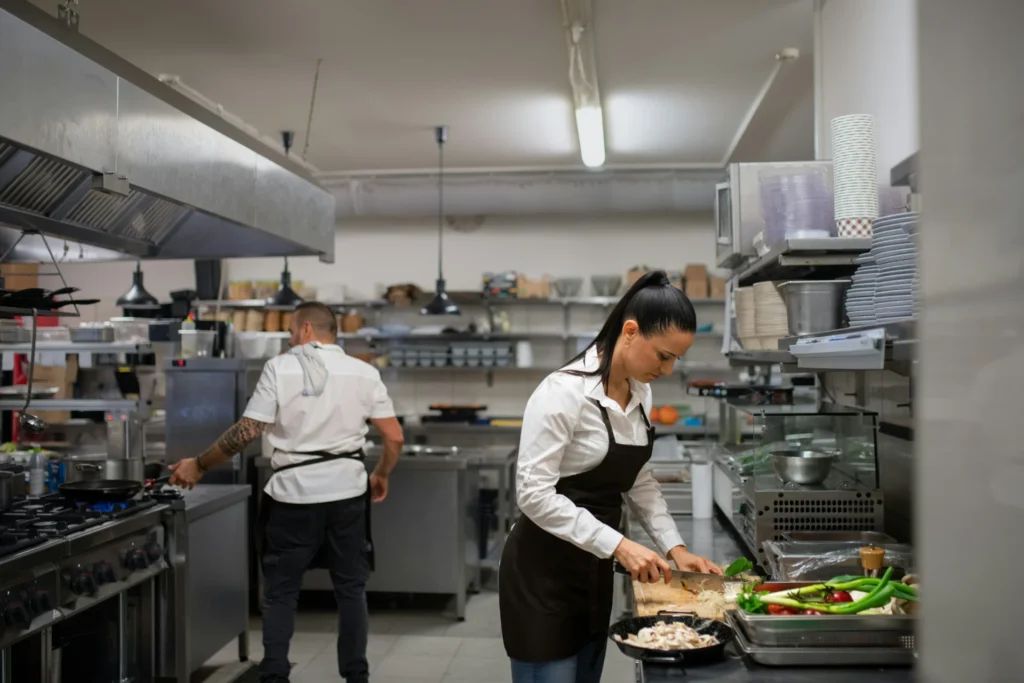
An ergonomically designed kitchen is necessary for safe and efficient work. Equipment placement should encourage a process sequence, not one that requires the operator to return to the same equipment more than necessary. Arrange cooking stations so chefs have what they need to minimize their time roaming around the kitchen. You might decrease the probability of accidents and enhance the overall speed of service.
Adopting an ergonomic design extends beyond equipment placement. Adjustable-height workstations accommodate staff members of varying heights, reducing strain and the potential for injury. Proper lighting is vital for a restaurant kitchen’s functionality and safety. Bright, even lighting helps staff perform tasks more efficiently and with fewer mistakes. Opt for lighting solutions that reduce glare on shiny surfaces and provide good color rendering for food preparation areas.
Incorporating Flexibility: Adaptable Kitchen Spaces for Menu Changes
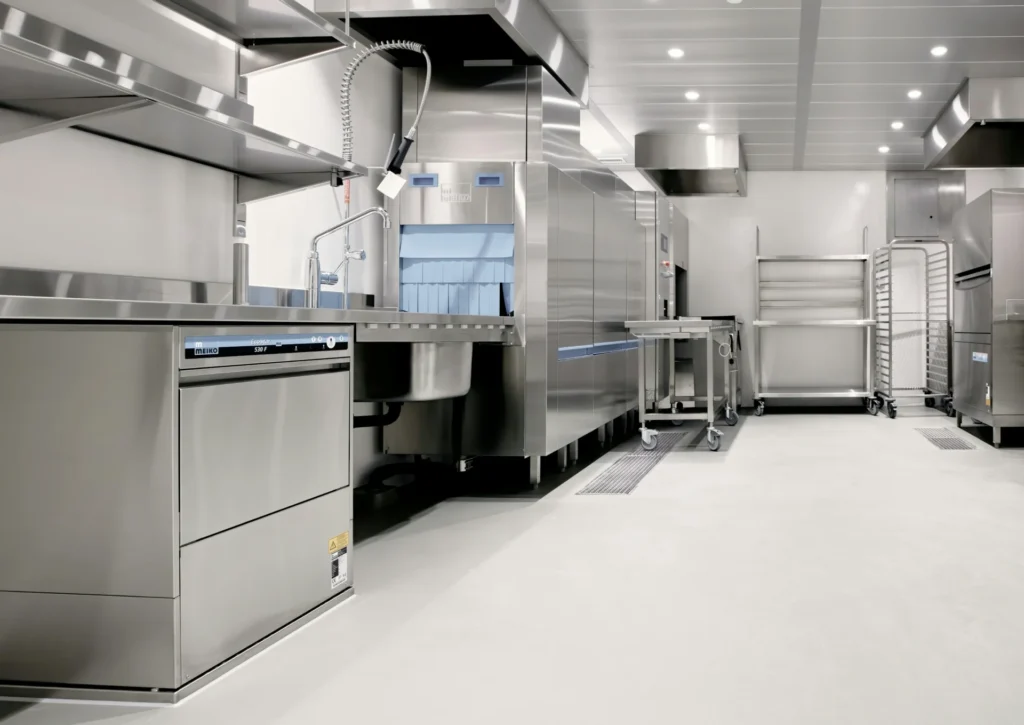
Flexibility should be a focus within your kitchen design so that seasonal changes to your menu can be amended, or if you decide to change your concept, then it’s not the end of the world. This is also where having modular kitchen equipment can be a valuable asset, since you can change the design to meet your needs. Mobile worktables, for instance, allow you to lock them down or roll them around as needed, depending on your menu at any given time.
When considering adaptability, invest in multi-purpose items that can be used multiple times. They are ideally suited to any kitchen that regularly introduces new products to its menu and needs an oven with various cooking options. Equipment that includes programmable settings could enable chefs to quickly change from one type of cooking to another to accommodate multiple recipes.
So, all in all, the functional furniture in a restaurant’s kitchen can determine the quality of its operation. It must combine efficiency and ergonomics, high-quality and competitive pricing, versatility, and dependability. By considering these factors, restaurant owners can design a workspace that balances the immediate needs of the business and future growth.






